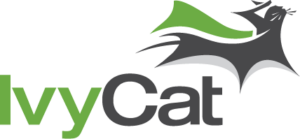With algorithm updates constantly rolling in from Google, you might be wondering what this means for your WordPress website’s SEO strategy. As the web fills up with more and more content, Google is always trying to find the best way to evaluate that content and give users the exact thing they’re searching for. What does that mean for SEO? The days of gaming the system with 5,000 word blog posts filled with meaningless, keyword-riddled sentences are long gone.
Optimizing your SEO requires many factors, from including relevant links to increasing your site’s mobile page speed. As Google’s algorithms have become more sophisticated, quality content and user-friendly features are more important than ever. Below, we’ll break down the main algorithm updates from Google over the past few years, and what it means for your site content.
Core Update 2019
As one of the more recent updates, this algorithm update affected many businesses and sites in the health industry. The two key factors Google is looking at with this one are trust and branding. The algorithm looks at cues and data from users to evaluate trust, such as time spent on site, pages per visit, and bounce rate. You can ensure your site performs well by having a strong brand message and a broad focus of topics within your area.
Panda
This algorithm update looks at the quality of your content based on how well it matches user queries. It filters out content that it deems low quality based on several factors, including grammar mistakes and duplicate text. It also takes into account bulky design features that hinder the user reaching the answer to their search query. Your best bet for optimizing to this update? Ensure your content has high-quality, unique copy that gets right to the point—without too many pop-ups or design gadgets in the way.

Penguin
The Penguin algorithm update focuses more on evaluating the links on your site. Google can recognize a lot of information about the type of links you’re including, especially if they are sending users to any shady sites. For this update, it also became important to avoid keyword stuffing, which is when you see a bunch of wordy, meaningless sentences filled to the brim with keywords.
Quick Tips for Linking:
- Only link pages with relevant or related content
- Make sure linked areas are surrounded by relevant content
- Diversify your anchor text links (if they’re all linking to the same place, Google might see this as an attempt to boost your rankings of that keyword or page linked).
- Ensure any links to your site come from multiple domains
Pigeon
The Pigeon update differentiates between local search and traditional web search to provide more relevant results for users. There are two different algorithms at play here, and the Pigeon update helped make them work better together. The algorithm ranks businesses close to the user’s location the highest. However, your best bet for dealing with the Penguin update is optimizing your SEO with the usual methods.
Local SEO Quick Tips:
- Ensure you have content related your business and your area
- Use keywords with your location, including multiple variations
- Optimize your site for mobile and tablet users
- Ensure any outside sources linking to your site are reputable
Fred
Dubbed the “quality update” of 2017, this was one of the many small algorithm updates from Google that had a big impact on lots of sites and businesses. This update ranks content over ad revenue, and dings any site with overly aggressive advertising. Related to this, poor user experience was also a major factory for this update. With this update, Google recognizes more features that can disrupt a user’s navigation (like whole-screen pop-ups and a lack of mobile design) and lowers the rankings of these sites accordingly.
Now that you’re in-the-know about what Google is looking for, consider adding a WordPress plugin to help you improve your SEO score. See our post on 5 Plug-Ins to Improve Your WordPress SEO Game to get started!

